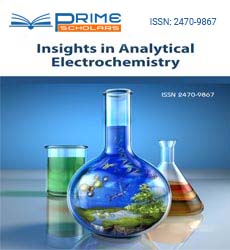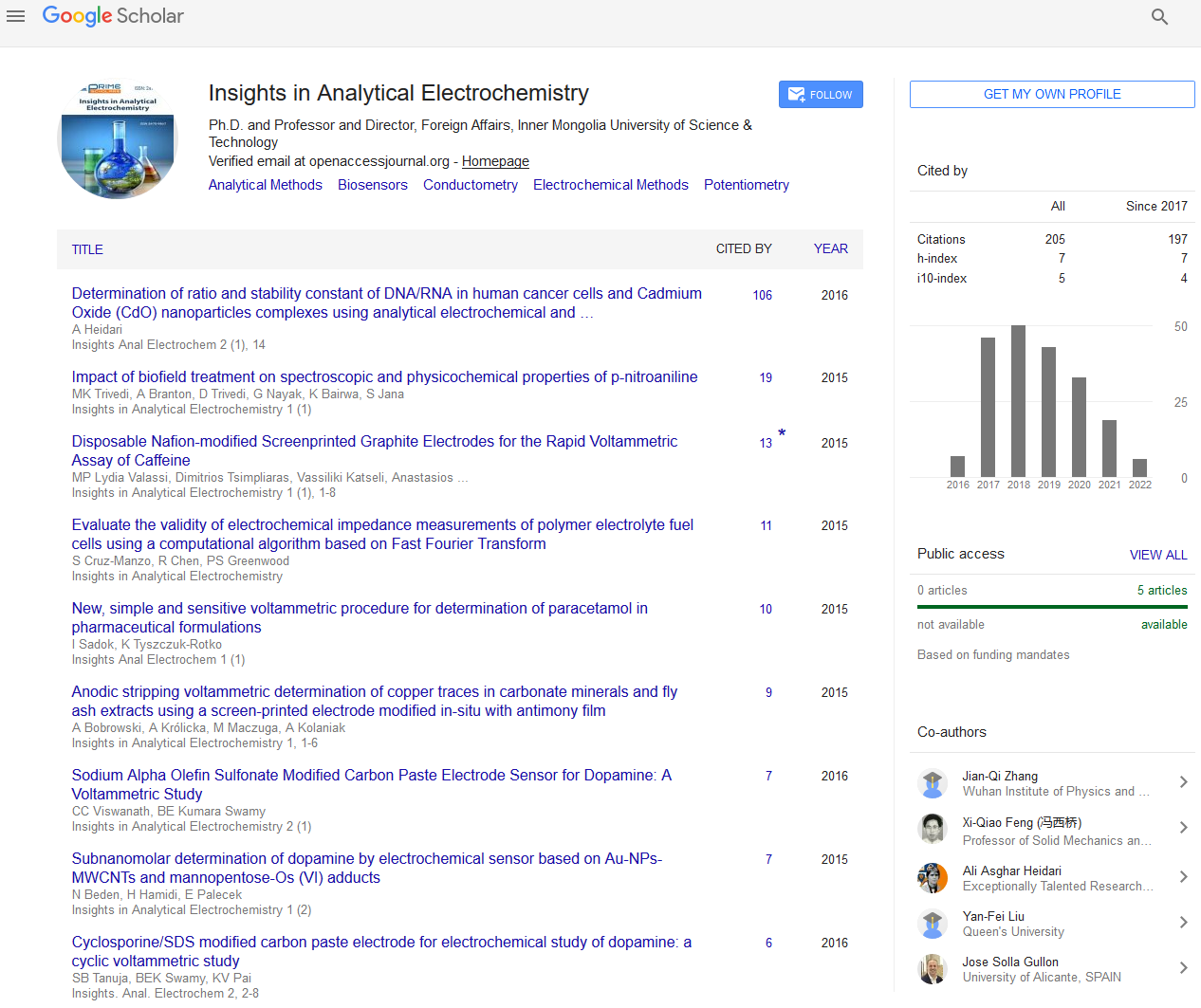Opinion - (2023) Volume 9, Issue 1
The Essentials of Electromyography: Electromyogram (Emg) Signal Recognition, Grouping of Emg Signs and Finding of Neuropathy Muscle Infection
Laura Gabriel*
Department of Electro Chemistry, Brock University, Canada
*Correspondence:
Laura Gabriel,
Department of Electro Chemistry, Brock University,
Canada,
Email:
Received: 02-Jan-2023, Manuscript No. IPAEI-23-15647;
Editor assigned: 04-Jan-2023, Pre QC No. IPAEI-23-15647 (PQ);
Reviewed: 18-Jan-2023, QC No. IPAEI-23-15647;
Revised: 23-Jan-2023, Manuscript No. IPAEI-23-15647 (R);
Published:
30-Jan-2023, DOI: 10.21767/2470-9867-9.1.04
INTRODUCTION
Electromyography (EMG), the keep of electrical action in muscle,
ought to be viewed as an augmentation of the clinical assessment.
It can recognize myopathic from neurogenic muscle
squandering and shortcoming. It can recognize anomalies like
constant denervation or fasciculations in clinically typical muscle.
It can, by deciding the appropriation of neurogenic anomalies,
separate central nerve, plexus, or radicular pathology; and
it can give strong proof of the pathophysiology of fringe neuropathy,
either axonal degeneration or demyelination. EMG is a
compulsory examination in engine neurone sickness to exhibit
the far and wide denervation and fasciculation expected for secure
conclusion.
Description
Ongoing many years have seen a push toward proof based
medication to illuminate the clinical dynamic interaction with
reproducible discoveries from top notch research studies.
There is a requirement for unbiased, quantitative estimation
devices to build the unwavering quality and reproducibility of
studies assessing the viability of medical care mediations, especially
in the field of physical and rehabilitative medication.
Surface electromyography is a harmless proportion of muscle
movement that is generally utilized in research however is under-
used as a clinical device in rehabilitative medication. Different
sorts of electrophysiological signals. Surface EMG is right
now an under-used clinical device in rehabilitative medication,
regardless of its unmistakable potential as a harmless proportion
of muscle movement. It is much of the time considered
more perplexing to break down than intramuscular EMG, a
strategy regularly applied in clinical nervous system science, as
boundaries of direct clinical importance can’t be promptly separated (outwardly or acoustically) from the recorded sign. Be
that as it may, with generally essential sign handling, significant
data on muscle initiation examples and muscle properties can
be acquired from surface electromyographic (sEMG) signals.
This data might possibly give a goal, quantitative technique
for surveying muscle capability, development examples, and
neighbourhood muscle weariness to illuminate the clinical dynamic
interaction. Surface EMG elements may likewise give an
additional compelling method for impartially catching contrasts
in engine control following careful or remedial mediations, or
preparing and recovery conventions, when contrasted and
more emotional measures in light of visual perception, manual
palpation, mechanical control, or standard clinical tests.
Conclusion
After a terminal has been embedded, you might be approached
to get the muscle, for instance, by lifting or twisting your leg.
The activity potential (size and state of the wave) that this
makes on the oscilloscope gives data about the capacity of the
muscle to answer when the nerves are animated. As the muscle
is contracted all the more powerfully, increasingly more muscle
filaments are initiated, delivering activity potentials. A related
system that might be performed is Nerve Conduction Study
(NCS). NCS is an estimation of the sum and speed of conduction
of an electrical motivation through a nerve. NCS can decide
nerve harm and obliteration, and is frequently performed
simultaneously as EMG. The two techniques help to recognize
the presence, area, and degree of infections that harm the
nerves and muscles. The current review was directed to decide
the viability of utilizing sEMG-B to expand the muscle action of
the extensor muscles of the hand and the dorsiflexor muscles
of the foot in the hemiparetic appendages of old patients with
mind harm coming about because of a stroke.
Citation: Gabriel L (2023) The Essentials of Electromyography: Electromyogram (Emg) Signal Recognition, Grouping of Emg Signs and Finding of Neuropathy Muscle Infection. Insights Anal Electrochem. 9:04.
Copyright: © 2023 Gabriel L. This is an open-access article distributed under the terms of the Creative Commons Attribution License, which permits unrestricted use, distribution, and reproduction in any medium, provided the original author and source are credited.

